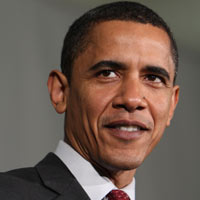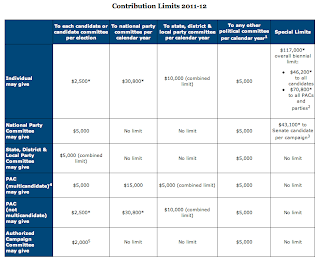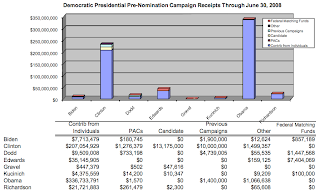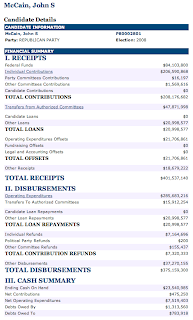
This article was last updated on April 16, 2022
Canada: ![]() Oye! Times readers Get FREE $30 to spend on Amazon, Walmart…
Oye! Times readers Get FREE $30 to spend on Amazon, Walmart…
USA: ![]() Oye! Times readers Get FREE $30 to spend on Amazon, Walmart…
Oye! Times readers Get FREE $30 to spend on Amazon, Walmart…
 In light of the impending Republican primary season and, in conjunction with the recent Occupy Wall Street movement and its emphasis on the growing dichotomy in American society, I thought that it would be interesting to take a look at Presidential election campaign financial statistics from the 2008 Federal election as well as the more recent Republican primary race for the Presidential candidacy. I’ll start with the statistics from the 2008 election and follow up with the more recent GOP race for the nod. Please note that most of my financial statistics have been gleaned from the Federal Election Commission (FEC) website. Before you start reading, I realize that the fundraising efforts for the Republican primary are far from over, nonetheless, I think that the data released to date gives us an interesting snapshot regarding financial support levels for each of candidates.
In light of the impending Republican primary season and, in conjunction with the recent Occupy Wall Street movement and its emphasis on the growing dichotomy in American society, I thought that it would be interesting to take a look at Presidential election campaign financial statistics from the 2008 Federal election as well as the more recent Republican primary race for the Presidential candidacy. I’ll start with the statistics from the 2008 election and follow up with the more recent GOP race for the nod. Please note that most of my financial statistics have been gleaned from the Federal Election Commission (FEC) website. Before you start reading, I realize that the fundraising efforts for the Republican primary are far from over, nonetheless, I think that the data released to date gives us an interesting snapshot regarding financial support levels for each of candidates.Let’s open by looking at how many votes were cast three years ago. In the 2008 election, there were a total of 131,257,328 votes cast; 59,934,814 (or 45.66 percent of the popular vote) for the Republicans who had selected John McCain as their candidate and 69,456,897 (or 52.92 percent of the popular vote) for Barak Obama. Ralph Nader followed in distant third place with 738,475 votes (or 0.56 percent of the popular vote). Let’s put these numbers into perspective. The Census Bureaureports that in 2008, there were 206.072 million American citizens aged 18 years and older. Of these, 146.311 million were registered to vote in 2008 representing 71 percent of all potential voting-age Americans. This is a decrease in registration of 1 percentage point from the 2004 election; of these registered voters, 89.6 percent actually voted in 2008. When the ballots were all counted, 63.6 percent of all voting-age citizens took the time to cast a ballot, roughly the same percentage as in 2004 as shown on this chart:
Now, let’s look at the total fundraising for the 2008 Presidential campaign to the end of December 2008 noting that a massive $1.334 billion dollars was raised from individual Americans. Here is a summary of the total contributions as well as the average size of the donations made by individuals and how much was raised for a given donation size range:
Notice that, while 32 percent of the donations made by individuals were under $200, just over 31 percent of all Presidential Campaign donations were $2000 and larger. In case you weren’t aware, under the United States Federal Campaign Finance Law, the limit that individuals may contribute to a candidate or candidate committee per election is now $2500 (it was $2300 in 2008) but that, should you happen to have $30,800 lying around doing nothing, you would still be within the law if you donated that amount to a national party committee once every calendar year! Here is a chart from the FEC website showing how the contribution limits vary according to the ultimate destination:
Americans that contribute more than $2000 to their favourite federal political cause would most likely be considered among the higher income class in the United States since most of Main Street America is scrambling to make their mortgage payments and put food on the table. Certainly those that donated the maximum of $30,800 to a national party committee would be considered among the "elite" or "one percent".
Here is a summary showing how much was raised by all of the Presidential candidates in total, the funds raised by each of two national parties and how much was raised by each of the Presidential race candidates in order from most raised to least:
Here’s more detail showing where the pre-nomination raised funds came from (to June 30th, 2008) starting with the Republican primary candidates:
…and finishing with the Democrats:
Let’s zoom in on the two final Presidential candidates, John McCain and Barak Obama. Here is more detail showing what John McCain’s team raised, spent and had left over after the 2008 election:
Here is more detail showing what Barak Obama’s team raised, spent and had left over after the 2008 election:
John McCain raised $206,590,868 from individuals and he received 59,934,814 votes meaning that each vote is associated with a measly $3.45 in individual receipts. Barak Obama raised $664,871,475 from individuals for the 2008 Presidential election and he received 69,456,897 votes meaning that each vote for Obama is associated with $9.57 in individual receipts. On the expenditure side, John McCain spent $367,838,967 excluding contribution refunds but including loan repayments. This means that, on average, his campaign spent $6.14 for each vote that he received. The Obama campaign team spent $754,613,607 excluding contribution refunds. This means that, on average, his campaign spent $10.86 for each vote that he received. The fact that both candidates spent $1.12 billion to win the "prize" is rather sobering, as is the fact that both men had incurred personal debts totalling nearly $2 million.
Now, I’d like to take a look at just how big an average individual donation is and just what proportion of American voters of both the Republicans and Democrats chose to vote with their wallets. According to the FEC website, Barak Obama and his Obama for America Committee raised a total of $664,872,382from 688,750 individuals during the 2007 – 2008 election cycle as shown here:
This means that the donation to the Obama campaign from each individual averaged $965.00. Since he received 69,456,897 votes, it means that just over 0.99 percent of Americans who voted Democrat in 2008, donated to the Obama campaign.
Again, according to the FEC website, John McCain and his various election committees raised a total of $206,590,868 from 236,341 individuals during the 2007 – 2008 election cycle as shown here:
This means that the donation to the McCain campaign from each individual averaged $874.00. Since he received 59,934,814 votes, it means that less than 0.39 percent of Americans who voted Republican in 2008, donated to the McCain campaign.
I found it most interesting to see that less than one percent of those voters who voted in the 2008 federal election, actually donated to their favourite political cause. If we use the Census Bureau total number of eligible American voters (206.7 million) as a benchmark, only 0.45 percent of individual eligible American voters donated to a federal political party or candidate, a tiny fraction of the potential voting public.
Now, let’s move to the current Republican race. Here is a chart that I used in an earlier posting:
You can see quite quickly that, to the end of the third quarter of 2011, a total of 54,026 Republicans have donated $82,502,949 to their candidate of choice. This works out to an average of $1527 per donor. If we take the number of Republican voters in the 2008 election to give us a reasonable idea of how many Americans could potentially vote for the Republican candidate in 2012, we see that only 0.09 percent of 2008 Republican voters have made a donation to the slate of GOP Presidential candidates. With the average size of their donation being in excess of $1500, I would suspect that these donors are among the "one percent". President Obama is not doing well at this point either; thus far, he has received donations from only 55,662 individuals, representing a tiny 0.08 percent of Democrat voters in 2008. While I realize that we are not yet in the thick of the two-party election cycle, it is interesting to see that a very insignificant number of Americans have considered making a cash donation to see that the Republican candidate of their choice is selected or that their Democratic President is re-elected.
Unfortunately, as this posting shows, Presidential election campaigns spend an unfathomably large amount of money, in fact, a billion dollar campaign is not out of reach for President Obama in 2012 despite the protestations of his campaign manager Jim Messina as shown here:
http://www.youtube.com/watch?v=_7Y-Q9ZY5Ao
There is no doubt that it takes an unrealistically massive fundraising effort for campaign teams to get their Presidential candidate elected. What these statistics show is that there is an infinitisimally small proportion of Americans who vote with their wallets; just under one percent in the case of the Democrats and well under half a percent in the case of the Republicans in 2008. From the average size of the declared donations, it appears that only a certain select wealthy demographic can afford to make significant and meaningful political contributions to support the candidate of their choice. While campaigns like the small "mom and pop" donations, they LOVE the big donations. It’s even more surprising to see that, despite the growing left-right chasm in American politics, such a tiny number of Americans support their political choice with a cash contribution. Maybe that’s the one percent (or less) that the OWS demonstrators should be focusing on. After all, you can’t run a campaign on hot air alone although you’d never know it! As well, when Main Street Americans sees the massive expenditures necessary to win the ultimate political prize in America, it should become quite apparent just how out of touch America’s politicians have become. After all, not many ordinary Americans have first hand experience with seven, eight or nine figure numbers with a dollar sign in front of them, let alone when the money involved is voluntarily donated.
Click HERE to read more of Glen Asher’s columns.
Article viewed on Oye! Times at www.oyetimes.com
You can publish this article on your website as long as you provide a link back to this page.












Be the first to comment